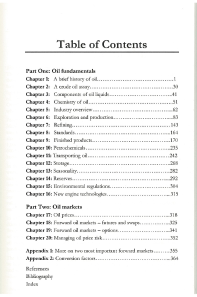
단행본
Market Madness: A Century of Oil Panics, Crises, and Crashes
- 발행사항
- New York : Oxford University Press, 2015
- 형태사항
- xx, 221p. : ill ; 25cm
- 서지주기
- Includes bibliographical references (pages 199-211) and index
- 주제명
- Energy consumption - - United States - - History Energy policy - - United States - - History Petroleum industry and trade - - United States - - History Petroleum reserves - - United States - - History
소장정보
| 위치 | 등록번호 | 청구기호 / 출력 | 상태 | 반납예정일 |
|---|---|---|---|---|
이용 가능 (1) | ||||
| 자료실 | E205923 | 대출가능 | - | |
이용 가능 (1)
- 등록번호
- E205923
- 상태/반납예정일
- 대출가능
- -
- 위치/청구기호(출력)
- 자료실
책 소개
In Market Madness: A Century of Oil Panics, Crises, and Crashes, Blake Clayton uses four historical case studies to document claims about the future of the U.S. oil supply and discuss their impact on the market and policymaking. He explores the conditions in which oil supply fears arise, gain popularity, and eventually wane, and shows how important such stories can be in affecting financial markets. He takes an innovative approach commonly used to assess the
role of "irrational exuberance" in the technology and housing markets to determine how unfounded pessimism affects markets in oil and other exhaustible resources.
Stock market booms are cause for celebration. But when oil prices soar because supplies are failing to keep up with demand, the response is nearly always apocalyptic. Predictions of the end of oil can create anxiety on Wall Street and in Washington, stoking fears that production has hit a ceiling and prices will rise in perpetuity. Yet these dire visions have always proven wrong. Market Madness is the story of four waves of American anxiety over the last 100 years about a looming end to oil reserves. Their sweeping pattern-as large price increases lead to widespread shortage fears that eventually dissipate when oil production rises again and prices moderate-has defined the wild price swings in the oil market down to the present day. Blake Clayton, a Wall Street stock analyst and adjunct fellow at the Council on Foreign Relations, makes the case for the need for better information, communication and transparency. While these measures will not eliminate volatility and unpredictability completely, they would mitigate unnecessary price spikes and improve both investor and government decision-making. Market Madness is the first study to employ Nobel Laureate economist Robert Shiller's "new era economics" beyond the markets to which he famously applied it-the 1990s dot-com equity market and the mid-2000s housing market-in order to better understand the dynamics of speculative bubbles and irrationality in the commodities markets. In so doing, it breaks new ground in illuminating how mass beliefs about the future of a vital asset like oil take shape and what the future of energy may hold.
Stock market booms are cause for celebration. But when oil prices soar because supplies are failing to keep up with demand, the response is nearly always apocalyptic. Predictions of the end of oil can create anxiety on Wall Street and in Washington, stoking fears that production has hit a ceiling and prices will rise in perpetuity. Yet these dire visions have always proven wrong. Market Madness is the story of four waves of American anxiety over the last 100 years about a looming end to oil reserves. Their sweeping pattern-as large price increases lead to widespread shortage fears that eventually dissipate when oil production rises again and prices moderate-has defined the wild price swings in the oil market down to the present day. Blake Clayton, a Wall Street stock analyst and adjunct fellow at the Council on Foreign Relations, makes the case for the need for better information, communication and transparency. While these measures will not eliminate volatility and unpredictability completely, they would mitigate unnecessary price spikes and improve both investor and government decision-making. Market Madness is the first study to employ Nobel Laureate economist Robert Shiller's "new era economics" beyond the markets to which he famously applied it-the 1990s dot-com equity market and the mid-2000s housing market-in order to better understand the dynamics of speculative bubbles and irrationality in the commodities markets. In so doing, it breaks new ground in illuminating how mass beliefs about the future of a vital asset like oil take shape and what the future of energy may hold.
목차
1. Introduction
2. "A National Crisis of the First Magnitude": The United States Geological Survey in an Era of Booming Demand, 1909-1927
3. "A New Era of Scarcity and Higher Prices": Wartime Demand and the End of American Self-Reliance in Oil, 1940-1949
4. "A Problem Unprecedented in Our History": American Anxiety in the Early Days of OPEC, 1970-1986
5. "A Permanent Radical Rise in Oil Prices": Peak Oil Takes Wall Street, 1998-2013
6. Conclusion


